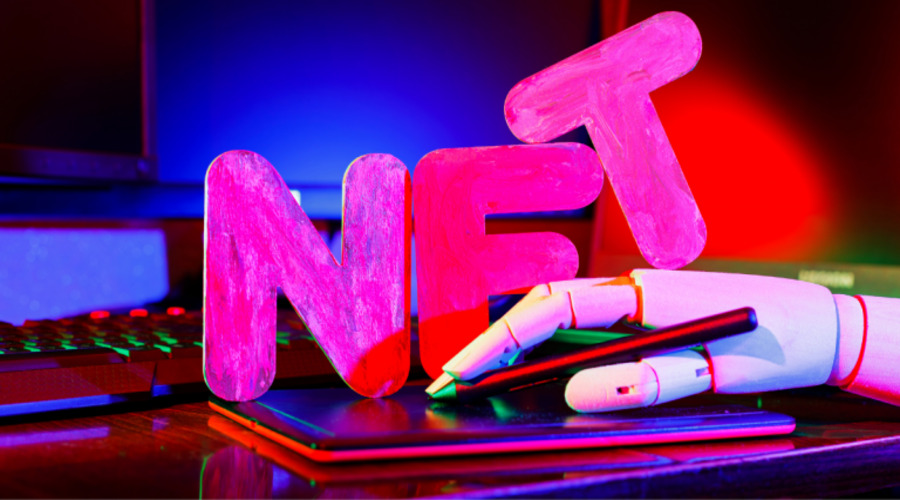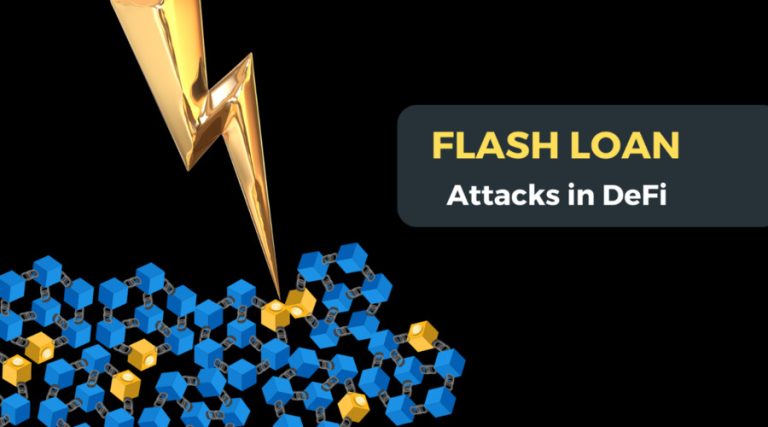
Exploring the Concept of “Minting” NFTs Securely
In recent years, the world of digital art has been revolutionized by the emergence of Non-Fungible Tokens (NFTs). These unique digital assets have gained immense popularity, with artists, collectors, and investors flocking to the NFT market. Central to the creation of NFTs is the process called “minting.” This article aims to explore the concept of minting NFTs securely, shedding light on their significance, best practices, security risks, and the future of this exciting technology.
Introduction to NFTs
NFTs, or Non-Fungible Tokens, are digital assets that represent ownership or proof of authenticity of a unique item or piece of content. Unlike cryptocurrencies such as Bitcoin or Ethereum, which are fungible and can be exchanged on a one-to-one basis, NFTs are indivisible and hold distinct characteristics that make them unique. This uniqueness makes them ideal for representing digital art, music, videos, virtual real estate, and other forms of digital content.
As the popularity of NFTs has skyrocketed, so has the interest in minting them. Minting refers to the process of creating an NFT by linking it to a digital asset and storing it on a blockchain. This process provides a digital certificate of ownership, ensuring the authenticity and provenance of the asset. However, to ensure the security and integrity of the NFT, it is crucial to follow best practices and use secure platforms.
Understanding Minting in NFTs
Minting an NFT involves several key steps. Firstly, an artist or creator selects a digital asset, such as an image, video, or audio file, that they want to tokenize. They then choose a blockchain platform that supports NFTs, with Ethereum being one of the most popular choices. The chosen platform uses smart contracts to store and manage the ownership data of the NFT.
To mint the NFT, the creator pays a transaction fee and follows the platform’s guidelines for creating the token. The digital asset is linked to a unique token identifier, which is then added to the blockchain. This process generates a record of ownership, timestamp, and other relevant metadata, making it easy to trace the history and authenticity of the NFT.
Importance of Secure Minting in NFTs
Secure minting is crucial for several reasons. Firstly, it ensures the rightful ownership of the NFT and protects it from counterfeiting or unauthorized duplication. By leveraging blockchain technology, which is inherently transparent and immutable, minting provides a decentralized and tamper-proof system for proving ownership.
Additionally, secure minting builds trust and confidence in the NFT market. With numerous instances of fraudulent NFTs and plagiarism, buyers and collectors need assurance that the digital assets they are acquiring are genuine and original. A secure minting process, combined with verification mechanisms, helps to weed out counterfeit or plagiarized NFTs, creating a more trustworthy ecosystem.
Best Practices for Secure Minting in NFTs
When minting NFTs, it is essential to follow best practices to ensure security and protect against potential risks. Here are some key guidelines to consider:
- Choosing a reputable blockchain platform: Selecting a well-established and reputable blockchain platform is crucial. Platforms like Ethereum, with its ERC-721 standard, offer robust infrastructure, community support, and a wide range of tools and marketplaces.
- Protecting private keys and wallets: The private keys used to access and manage NFTs are critical. They should be stored securely, preferably in cold storage wallets or hardware wallets, to prevent unauthorized access or theft.
- Verifying the source and authenticity: Before minting an NFT, it is essential to verify the source and authenticity of the digital asset. This helps to prevent copyright infringement or using copyrighted materials without permission.
These best practices lay the foundation for secure minting and protect both creators and buyers in the NFT ecosystem.
Exploring Security Risks in NFTs

While secure minting is crucial, it’s equally important to be aware of potential security risks. These risks include counterfeiting and duplication, copyright infringement, and vulnerabilities in smart contracts.
Counterfeiting and duplication can occur when malicious actors create fake NFTs that resemble genuine artworks or digital assets. This not only undermines the value of authentic NFTs but also deceives buyers and collectors. Security measures, such as strong authentication and verification processes, are essential to mitigate these risks.
Copyright infringement is another concern in the NFT space. Creators must ensure that they have the necessary rights and permissions to tokenize and sell their digital assets. Failure to do so can result in legal repercussions and damage the reputation of the NFT market.
Smart contracts, the backbone of many blockchain platforms, can also pose security risks if not adequately audited and tested. Vulnerabilities in smart contracts can lead to hacking attempts or unauthorized modifications, compromising the security and integrity of the NFTs. Regular security audits and updates are essential to address these vulnerabilities.
Secure Minting Platforms and Tools in NFTs
Several blockchain platforms cater specifically to NFT minting, each with its unique features and characteristics. Ethereum, with its ERC-721 standard, is the most widely adopted platform for creating NFTs. However, other platforms like Binance Smart Chain, Flow, and Tezos also offer NFT minting capabilities.
These platforms provide secure infrastructure, community support, and various tools for minting and managing NFTs. They often include features like royalty payments, decentralized storage, and marketplace integrations. Conducting thorough research and selecting a platform that aligns with your specific needs and priorities is crucial for secure minting.
Protecting Intellectual Property in NFTs
Intellectual property (IP) protection is a critical aspect of secure minting. Creators must understand the legal implications and considerations surrounding their digital assets. Implementing measures like digital rights management (DRM) can help protect the IP rights associated with NFTs.
Additionally, licensing plays a crucial role in defining how NFTs can be used and traded. Creators can choose to attach specific licenses to their NFTs, indicating the terms and conditions under which they can be sold or used. This helps protect the creator’s rights and enables them to earn royalties when their NFTs are resold.
Navigating the legal landscape surrounding NFTs and IP protection can be complex. Seeking legal advice and staying informed about the evolving regulations and guidelines is essential for creators and collectors alike.
User Guidelines for Secure Minting in NFTs
For individuals interested in minting NFTs, it’s important to follow certain guidelines to ensure a secure and successful experience:
- Research and understand the process: Before diving into minting, take the time to research and understand the entire process. Familiarize yourself with the chosen blockchain platform, the associated costs, and the steps involved in creating and minting NFTs.
- Use secure platforms and tools: Opt for reputable and secure blockchain platforms and tools for minting NFTs. Consider factors like security features, community reputation, and marketplace integrations when making your choice.
- Educate yourself about security best practices: Stay informed about security best practices in the NFT space. Keep up with the latest developments, security audits, and guidelines provided by the blockchain platform or community.
By following these guidelines, individuals can minimize security risks and ensure a secure minting experience.
NFT Marketplaces and Verification
Once an NFT is minted, it can be listed and sold on various NFT marketplaces. These platforms provide a marketplace for creators to showcase their NFTs and for buyers to discover and purchase them. Some popular NFT marketplaces include OpenSea, Rarible, and SuperRare.
When engaging with NFT marketplaces, it’s essential to consider the verification processes and standards they employ. Reputable marketplaces often have mechanisms in place to verify the authenticity and ownership of NFTs. This includes verifying the identity of creators, validating the ownership history, and conducting due diligence on listed assets.
Buyers and collectors should familiarize themselves with these verification processes and be cautious when dealing with unverified or suspicious NFTs. Verifying the reputation of sellers and creators, checking the ownership history, and assessing the platform’s security measures can help mitigate risks.
NFT Collectors and Security
As NFTs gain traction, collectors are becoming increasingly interested in acquiring these digital assets. Collectors must consider security aspects when purchasing NFTs to protect their investments and ensure the authenticity of their acquisitions.
When collecting NFTs, several factors should be considered. Firstly, verifying the authenticity and ownership of the NFT is crucial. Conduct due diligence, research the creator’s reputation, and verify the asset’s history before making a purchase. Reputable marketplaces and verification mechanisms can provide additional confidence in the authenticity of the NFT.
Furthermore, evaluating the security measures implemented by creators is essential. Understand how the digital asset is stored, the platforms used for minting, and the associated security features. Transparent and secure practices by creators contribute to the overall security and value of the NFT.
Future Trends and Developments in NFTs
The concept of minting NFTs securely is continually evolving, driven by advancements in blockchain technology and the growing demands of the NFT market. As the technology matures, we can expect to see several developments in the future:
- Advancements in blockchain technology: Blockchain platforms will continue to enhance their scalability, interoperability, and security features. This will lead to more robust and efficient minting processes for NFTs.
- Enhanced security features for NFTs: As the NFT ecosystem expands, we can anticipate the development of enhanced security features tailored specifically for NFTs. This may include improved verification mechanisms, anti-counterfeiting measures, and intellectual property protection tools.
- Potential impact on the art and digital asset market: NFTs have already disrupted the art market, providing new opportunities for artists, collectors, and investors. In the future, we may witness a broader impact on other digital assets and industries, such as music, gaming, virtual real estate, and more.
Conclusion
Minting NFTs securely is of paramount importance to maintain trust and integrity in the evolving world of digital assets. By understanding the process, following best practices, and leveraging secure platforms, creators and collectors can ensure the authenticity and protection of their NFT. As the NFT market continues to grow, it is crucial to stay informed about the latest trends, security measures, and legal considerations to navigate this exciting space successfully.
FAQs
Q: What is the difference between minting and buying NFTs?
A: Minting an NFT refers to the process of creating a unique digital asset and linking it to a blockchain, establishing ownership and authenticity. Buying an NFT involves purchasing an existing token from a marketplace or directly from the creator.
Q: Can I mint an NFT without using a blockchain platform?
A: No, minting NFTs requires the use of a blockchain platform. The blockchain provides the infrastructure and smart contracts necessary to create, store, and manage NFTs securely.
Q: How can I protect my NFTs from being stolen?
A: To protect your NFTs, use secure wallets and storage solutions for your private keys. Avoid sharing sensitive information and be cautious when interacting with unverified platforms or suspicious links. Regularly update your security measures and stay informed about the latest best practices.
Q: Are there any risks of losing my NFTs if the blockchain platform shuts down?
A: If a blockchain platform were to shut down, there could be risks associated with accessing and managing your NFTs. However, reputable blockchain platforms often provide migration options or mechanisms to transfer your NFTs to another compatible platform.
Q: Can I sell a partially minted NFT?
A: Generally, NFTs are minted as complete tokens. Selling a partially minted NFT may not be possible or may require additional steps to finalize the minting process. It is advisable to complete the minting process before listing an NFT for sale.


